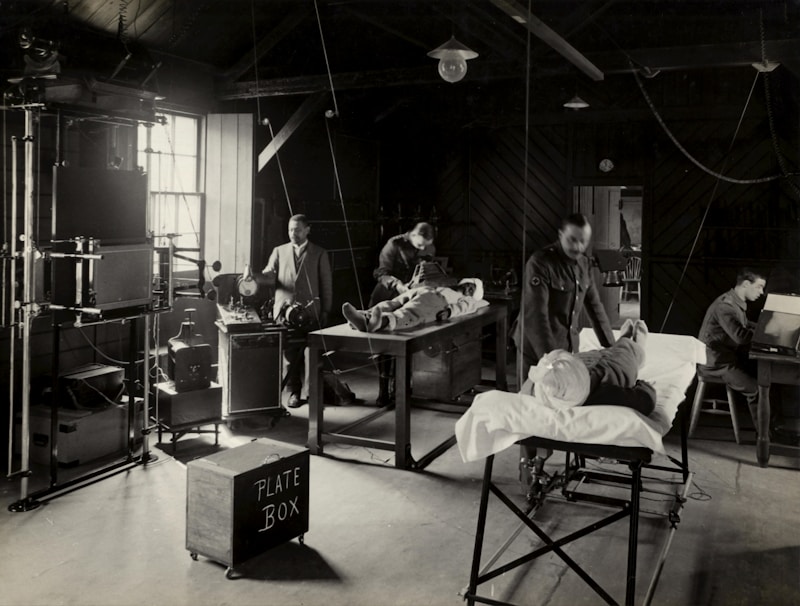Podcast
Questions and Answers
What defines overt racism in a healthcare setting?
What defines overt racism in a healthcare setting?
Which of the following is NOT a recommendation for creating a culturally safe workplace?
Which of the following is NOT a recommendation for creating a culturally safe workplace?
What stereotype is related to Indigenous people according to the SYS project?
What stereotype is related to Indigenous people according to the SYS project?
What is a key focus of microaggressions training in the workplace?
What is a key focus of microaggressions training in the workplace?
Signup and view all the answers
What is the primary goal of the CPR Racism guide published in 2024?
What is the primary goal of the CPR Racism guide published in 2024?
Signup and view all the answers
What is the main focus of cultural sensitivity in health care?
What is the main focus of cultural sensitivity in health care?
Signup and view all the answers
Which of the following concepts focuses on self-reflection and lifelong learning in cultural contexts?
Which of the following concepts focuses on self-reflection and lifelong learning in cultural contexts?
Signup and view all the answers
What does cultural safety primarily address in health care settings?
What does cultural safety primarily address in health care settings?
Signup and view all the answers
Which of the following is NOT a core concept of the Practice Standard for Indigenous Cultural Safety?
Which of the following is NOT a core concept of the Practice Standard for Indigenous Cultural Safety?
Signup and view all the answers
How does anti-racist practice manifest in nursing according to the guidelines?
How does anti-racist practice manifest in nursing according to the guidelines?
Signup and view all the answers
Which action indicates cultural humility in patient interactions?
Which action indicates cultural humility in patient interactions?
Signup and view all the answers
Which principle emphasizes the importance of relational care in nursing?
Which principle emphasizes the importance of relational care in nursing?
Signup and view all the answers
What is the difference between treating everyone equitably and achieving cultural sensitivity?
What is the difference between treating everyone equitably and achieving cultural sensitivity?
Signup and view all the answers
Study Notes
Week 10: Addressing Indigenous-Specific Racism through Cultural Safety & Humility
- Cultural humility is a lens for anti-racist nursing practice.
- Cultural sensitivity is not about treating everyone equitably; it's about being aware of and respecting cultural differences.
- Treating everyone equitably is about fair chances and access, potentially with different levels of support.
- Cultural safety is about understanding power imbalances.
- Actions for culturally safe care include cultural awareness, sensitivity, competence, and humility.
- Cultural awareness is recognizing differences.
- Cultural sensitivity is knowing the impact of differences on others.
- Cultural competence is building knowledge of diverse populations.
- Cultural humility involves self-reflection, recognizing the limits of expertise, and a willingness to learn.
- Nurses should engage in self-reflection and evaluate their own behaviors to provide culturally safe care, adhering to the CNO Code of Conduct (2023).
The Cultural Continuum
- Nurses provide inclusive and culturally safe care through cultural humility.
Indigenous Cultural Safety, Cultural Humility, and Anti-Racism
- Self-reflective practice is fundamental.
- Building knowledge through education is important.
- Taking action against racism is central.
- Creating safe health care experiences is prioritized.
- Person-led care is relational.
- Strengths-based and trauma-informed practice are essential.
Disrupting Power Imbalances
- Recognize the importance of valuing the opinions of patients and respecting their experiences.
Same World, Different Views
- Deficit/problem-based approach focuses on disease-oriented aspects, pathology, and fixing problems.
- Strength-based approach focuses on holistic care, health promotion, and patient experiences.
- Compliance is about adherence to agreed-upon approaches.
- Paternalistic care does actions for patients without involving them.
- Telling vs. doing with patients.
- De-contextualized care lacks consideration of the patient's environment.
- Detached, coercive care lacks engagement and respect.
Over and Covert Racism
- Over racism involves direct, overt acts of racism.
- Covert racism involves subtle, indirect acts of racism.
Recommendations (regarding stories of anti-Indigenous racism)
- Five harmful stereotypes exist regarding Indigenous people (racially inferior, diseased, addicted, mentally unwell, burdening/angry/aggressive, bad parents).
- Microaggressions and racism training are important for all.
- Responding to discrimination in the workplace and creating a supportive environment.
- CPR Racism guide to save lives when racist behaviour is witnessed.
Systemic racism in healthcare
- Understand how systemic racism and microaggressions in the workplace can impact patient care.
Studying That Suits You
Use AI to generate personalized quizzes and flashcards to suit your learning preferences.



